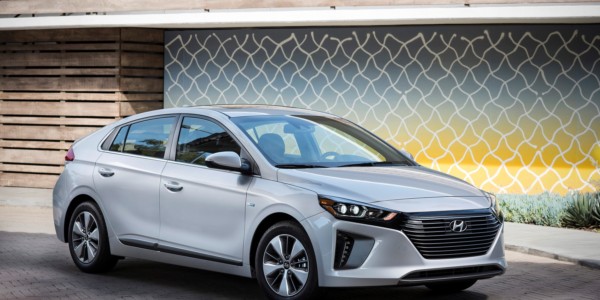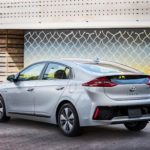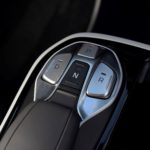By Jim Powell – MPG Automotive Journalist
What separates a great car, from a good car or a regular car? The details! It seems so simple and yet building a great car takes hundreds of designers, engineers, technicians, and scientists; not to mention marketing and accounting professionals, computer programmers, and assembly workers. Mazda is a small company with fewer resources than most manufacturers, yet their attention to detail sets them apart in many small vehicle categories. Mazda has always been just a half a degree off of the mainstream and has built some of the most sought-after and best-driving vehicles like the RX-7, MX-5 Miata, and recently, the CX-5. I would also include the Mazda3 in the category of “very fun-to-drive and affordable-to-own.”
Back in 1980, I worked on and drove a friend’s 323 Sedan and considered it more interesting than just another econobox hatchback.In the late 1980’s, Mazda upped the game with the 323 GTX with a turbo, all-wheel drive, and rally-inspired suspension. Since then, Mazda has improved upon the Mazda3 with the same formula [fun-to-drive, affordable sedans and hatchbacks] with better handling snappy powertrains.
However, today’s buyers are looking for more comfort and conveniences, and less enthusiastic performance. Thus, the 2019 Mazda3 has become an upscale version of itself, leaving behind some of the agile handling and quick steering. Dare I say, the little car that was a little louder and impulsive is now grown up.
Driving impressions of the new Mazda3 has come with mixed results. It is a quieter car and cabin with more insulation and a more compliant ride with better road isolation. The steering ratio has been configured for longer trips and the turn-in is not as crisp as the last generation. The wheels are a little further apart and that has smoothed out the ride- making this Mazda3 more stable on the freeway.
Mazda has aimed for higher ground in the automotive world and wants to compete with the likes of Acura, Lexus, Infiniti, and even some German compact cars. The Mazda3 interior is on par with entry-level luxury cars while better craftsmanship is putting more expensive cars on notice. One significant addition to the Mazda3 lineup is the option of all-wheel drive.
Mazda’s i-ACTIV AWD works similarly in all models and routes 98 percent of power to the front wheels under normal driving. The system can transfer torque up to as much as 50:50 front-to-rear when the front tires are about to slip. 27 different sensors use road, engine, transmission, and even windshield wiper use to calculate the possible loss of traction. Also internal and external temperature, yaw sensors, and steering angleare all computed 200+ times per second to determine the torque transfer.
Driving the Mazda CX-9 to Colorado in heavy snow demonstrated how the i-ACTIV AWD uses more than wheel slip to transfer power for maximum traction. The continuous grip and adjustments in snow and mud were impressive at all speeds. The Mazda3 should be even more planted and fun in slushy conditions.
The newest Mazda3 gets a revised 2.5-liter four-cylinder, Skyactiv-G engine with 186 horsepower at 6,000 rpm and 186 lb.-ft. of torque at 4,000 rpm. Like the Mazda3 of old, the engine likes to run in the higher revs. This version of their 2.5-liter powerplant also provides more mid-range power for passing and steep grades.
For economy, a cylinder-deactivation software is included (Mazda3 hatchback, Mazda3 Premium sedan and Mazda3 sedan equipped with i-ACTIV AWD). The Hatchback FWD with the 6MT is estimated at 25 city / 35 highway / 29 combined mpg. The FWD 6AT achieves another mile per gallon- up to 26 city / 35 highway / 30 combined. The loaded Mazda Premium with AWD (6AT) loses some efficiency with an EPA of 24 / 32 / 27 mpg.
Most competitors like Honda Civic and Toyota Corolla win this round in fuel efficiency due to extra weight in the Mazda3. Even though the hatchback is 7.9 inches shorter than the sedan, it still weighs 100 pounds more than the closest competitor.
Mazda has included their new G-Vectoring Control Plus system which uses torque vectoring and slight braking for more controlled turns. The system is not very easy to detect unless the backend starts to come around, then the G-VCP can be felt when the car regains its original path. Driving this hard is still a joy for enthusiasts, especially when there is a twisty road ahead.
Thankfully, one can still get a six-speed manual transmission but only in the Mazda3 Premium Hatchback FWD. Many carmakers only offer a stick-shift in the base models. Market research might be targeting Baby Boomers who would have the money to spring for more luxury items and the manual gearbox. Most will select the Skyactiv-Drive six-speed automatic transmission and most should if commuting in heavy traffic will be the Mazda3’s intended use.
The base model Mazda3 is called the Select trim and is only found in sedan form. The higher trim Preferred and Premium comes in both 4-door and 5-door models. As for style, the hatchback’ssmooth shape has a love or hate look while the sedan is longer in the trunk and more conventional. My opinion is that both versions of the Mazda3 are attractive cars using the latestKodo design- each with a unique and sophisticated style. See the cars in person before determining your shortlist.
Standard features include a new 8.8-inch widescreen on the center of the dash. Unfortunately, Mazda has decided to not include a touch screen so owners will have to learn the new but awkward commander control (toggle dial) in the center console to work the infotainment system.Another nitpick is the cup holder being located deep into the console area that restricts taller drink containers. Mazda, you offer a touchscreen in the Mazda6 so why not here in the Mazda3?
Other nice amenities include a leather-wrapped steering wheel and shiftknob for the Mazda3 hatchback. Upper trims get leather seats, power moonroof and some premium paint colors. Finally Mazda adds Apple CarPlay™ and Android Auto™, Bluetooth, and a BOSE® premium 12-speaker audio system as standard on Mazda3 hatchback. Preferred and higher trims get aluminum speaker grilles, heated front seats, and a Mazda’s Windshield-projected Active Driving Display (HUD).
The Hatchback’s standard safety systems are similar to other 2019 Mazda’s with New Driver Attention Alert, Lane Departure Warning with Lane-Keep Assist, and Blind Spot Monitoring with Rear Cross-Traffic Alert. Mazda also includes their pedestrian detection called Smart City Brake Support. Using the same cameras and radar, drivers also get radar cruise control. All models include Push-button ignition, rearview camera, and LED headlights and taillights. Also included are a new sound system, new steering wheel, and new knee airbags.
To save some expense and create more cargo space, Mazda used a torsion bar suspensionin the rear. Thankfully, this has not diminished the precise rear-wheel tracking. Mazda3 sedan’s smaller 205/60R16 tires on the Select trim does create some less than desired handling in emergency maneuvers. However, the sedan gets215/45R18 tires on the upper trims. The hatchback Select, Preferred or Premium packages include the same 215/45R18 M/S rated tires on all FWD models and the handling is very competent. We can hope for a MazdaSpeed 3 sportier version but Mazda is not committed to an enthusiast-desired model at this time.
Overall, the shapely Mazda3 is dressed for success. Some faithful followers might find the newest Mazda3 too sedate but others will find this a nice place to be with lots of options. Prices start at $21,000 and can climb north of $31,000 with all the Premium goodies. So shop around for the best value but consider this compact car if you want one of the finest and well-finished compact sedan/hatchbacks to date.




































